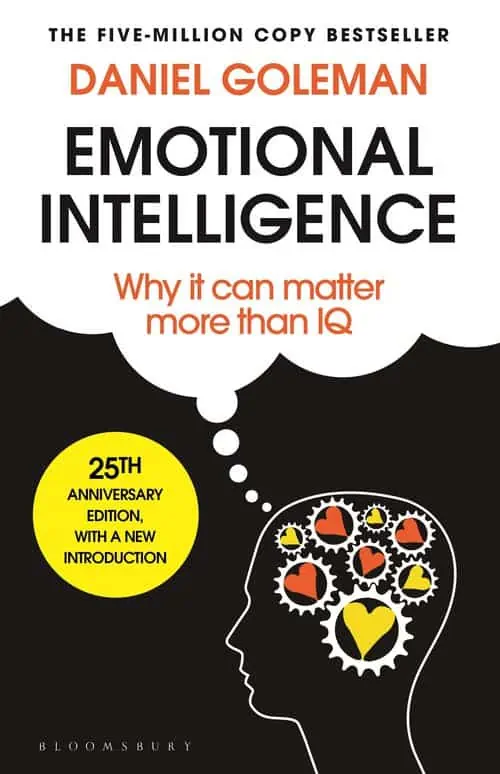
audio
There are 5 elements to the Emotional Intelligence (EI) framework.
The first is self- awareness
- how aware are you of your own emotional state, and how that might be affecting your own, or anyone else’s behaviour
- is your assessment of your emotional state accurate?
- Is your emotional state helping you, or not? Does it reinforce or diminish your confidence?
The second is self-regulation
- how able are you able to control your emotions? Do you control your emotions or do they control you?
- can you – and others – trust your emotional self-control, or do you or they worry that you might over-react emotionally?
- Are you able to choose an emotional state that is appropriate for the situation, and take responsibility, conscientiously, for your own actions?
- Can you adapt, emotionally, to changing situations, and stay calm?
Galeman also believes self-control enhances innovation, in that, without such emotional self control, people tend to blame and stay stuck with any situation, rather than calmly seek ways forward and improvement
The third is motivation
- Motivation clearly contributes to commitment, and achievement
- Goleman also believes emotionally intelligent people tend to be optimistic, and allied to self-control, are more prepared to act independently, and take the initiative
The fourth element is empathy
- This is mainly about understanding others, accepting without judgement, and offering support and development
- Goleman believes such empathy encourages valuing diversity, and leads to strong customer-focused behaviour
- He also thinks it adds to political astuteness – the ability to sense and adapt to internal networks and distribution of power
The final, and largest element is social relations
- This covers 8 key issues, all to do with excellent communication skills, such as:
o the ability to influence and lead others, particularly in times of change
o and the ability to build effective teams, collaborative relationships and resolve conflicts
Goleman’s 5 Key Elements
…and their sub-elements…
Self-awareness
Emotional awareness
Accurate self-assessment
Self-confidence
Self regulation
Self-control
Trustworthiness
Conscientiousness
Adaptability
Innovation
Motivation
Achievement drive
CommitmentInitiative
Optimism
Empathy
Understanding others
Developing others
Service orientation
Leveraging diversity
Political awareness
Social Relations
influence
communication
conflict management
leadership
change catalyst
building bonds
collaboration & co-operation
team capabilities
Can you say which of these 5 elements each of the speech bubbles relates to?
if something
upsets me, then I always cry
self-regulation
I find it difficult these days to find the drive to do what is essentially a boring job
motivation
to get the best
from others, you may need to prioritise their needs over your own
social relations
other people tell
me I’m arrogant, but they just don’t like successful people like me
self-awareness
I could tell he struggled talking about his dad; his voice went quieter and he couldn't find the words.
empathy
EI Casework
Use the 'my analysis' table to structure your thinking as you read the 2 case studies.
who demonstrates which EI elements well in the scenario? what’s the evidence for this?
who demonstrates which EI elements poorly in the scenario? what’s the evidence for this?
Philip has just heard from a neighbour that his mum has been taken into hospital, but doesn’t know why. He needs to tell his sister Jane, who works at the local cinema, and isn’t allowed to have her mobile on while on duty. He leaves work without telling anyone, phones the cinema Duty Manager, to say he’s on his way to see Jane, briefly explaining why. The manager asks if Philip wants the manager to tell Jane. Philip says “no, but thanks”. Philip meets with his sister, in a room set aside by the Duty Manager. When told, Jane is quiet, composes herself, and says “I think we should go to the hospital, now”. Philip agrees, and on the way out Jane goes to the Duty Manger, asks if it is OK to leave early, and thanks him for putting the room aside.
The next day Philip goes to work as usual, and is immediately called into the manager’s office. The manager (Eric) is angry, and says “Simon (a work colleague) saw you going to the cinema yesterday afternoon, when you should have been at work. Please regard this as an informal warning”
Brenda is a team leader, and Susan is one of her team members. Brenda is reading a report Susan has handed in, and it is poor – much worse than her usual standard.
Brenda phones Susan and asks her if she has time to come and see her. Susan says she has, and when she arrives, Brenda has made each of them a cup of tea. Handing Susan hers, Brenda moves from behind her desk and they both sit around a coffee table.
Brenda says “I’ve just read your report, and it isn’t up to your usual high standard, so I’m wondering if there’s any reason for this, because if there is, I’d like to help if I can”.
Susan immediately starts to cry. Brenda stays quiet, and puts a box of tissues on the table. When Susan stops crying, Brenda says, “Is there anything you’d like to talk through with me – I’d like to help if I can…”
audio
We've provided an extensive EI questionnaire designed to help you assess all the key behaviours , feelings, thoughts or beliefs that tend to create your overall level of emotional intelligence. The questionnaire can be used in a number of ways:
- firstly, for your own self-assessment
- you could also ask others to fill it in to give you their feedback, so you can compare their views with your own
- you could give it to others to do their own self-assessment
- you could use it for your team, so each team member self assesses and gets other team members' feedback; the results could be private for each team member, or could be shared, at least in summary form, so there is a team profile of the team's EI strengths and areas for development, at both an individual and collective level
want more?...
The Emotional Intelligence Channel
This podcast helps you learn more about EI & skills, tools, and techniques to use within your organisation to boost personal team effectiveness.
listen on... open
Emotional Intelligence
Daniel Goleman
Goleman, and this book, developed the Emotional Intelligence concept and model, an essential read for anyone who is seriously interested in this topic.
keep reading... open




